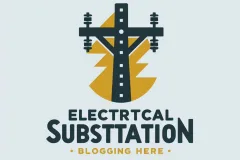In high-voltage substations, circuit breaker reliability is crucial for power system protection. This blog post discusses a significant issue encountered with 220kV circuit breakers where multiple tripping coils failed due to incorrect DC supply connections.
The Initial Problem
At our grid station, we encountered recurring issues with 220kV circuit breakers indicating “Trip Coil DC Supply Fail.” What made this particularly concerning was the unusually high failure rate — more than 10 tripping coils were damaged across different breakers within a single year. This pattern suggested a systemic issue rather than isolated failures.
Circuit Breaker Configuration
The circuit breaker in question features three essential coils:
1.One closing coil for breaker closure operations
2.Two independent tripping coils (Trip Coil-1 and Trip Coil-2) for redundant tripping capability
This dual tripping coil arrangement is designed for reliability, ensuring the breaker can still trip even if one coil fails. However, this redundancy became the source of our problem due to incorrect wiring.
Investigation and Root Cause
After extensive troubleshooting and careful examination of each breaker, we discovered a critical wiring error in the DC supply connections. The problem lay in how the tripping coils were interconnected:
1.Trip Coil-1 was inadvertently connected to force TripCoil-2
2.Trip Coil-2 was similarly connected to force TripCoil-1
This created a dangerous feedback loop where activating one trip coil would automatically engage the other. Instead of operating independently as designed, the coils were effectively “fighting” each other, leading to excessive electrical stress and premature failure.
Technical Impact of Incorrect Wiring
The incorrect wiring configuration caused several technical issues:
- When one trip coil activated, it forced current through the second coil, even when unnecessary
- This simultaneous activation created voltage spikes and excessive current flow
- The coils were subjected to electrical stress beyond their design specifications
- The redundancy feature was compromised, defeating the purpose of having dual trip coils
Lessons Learned and Recommendations
This experience highlights several important points for substation maintenance teams:
- Regular verification of DC supply connections is crucial, especially after any maintenance work
- Wiring diagrams should be thoroughly reviewed and updated to reflect the correct configuration
- Implementation of proper testing procedures before returning breakers to service
- Documentation of any modifications or repairs for future reference
- Training maintenance staff on the importance of independent operation of trip coils
Preventive Measures
To avoid similar issues in the future, consider implementing these preventive measures:
- Develop detailed checklist for circuit breaker maintenance
- Perform periodic audits of breaker control circuits
- Use clear labelling and color-coding for DC supply connections
- Implement regular testing protocols for trip coil operation
- Maintain comprehensive documentation of breaker modifications
Conclusion
This case study demonstrates how seemingly minor wiring errors can lead to significant equipment failures and reliability issues. The key to resolving such problems lies in systematic troubleshooting and attention to detail. By sharing these experiences, we hope to help other maintenance teams avoid similar issues and improve the reliability of their high-voltage circuit breakers.
